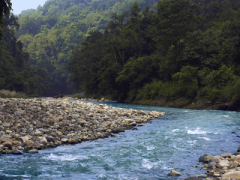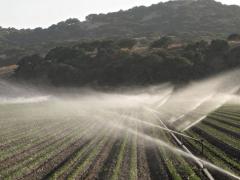Inland Waters Increasingly Produce and Emit Nitrous Oxide
Nitrous oxide (N2O) is a long-lived greenhouse gas and currently contributes ∼10% to global greenhouse warming. Studies have suggested that inland waters are a large and growing global N2O source, but whether, how, where, when, and why inland-water N2O emissions changed in the Anthropocene remains unclear. Here, we quantify global N2O formation, transport, and emission along the aquatic continuum and their changes using a spatially explicit, mechanistic, coupled biogeochemistry–hydrology model.
The global inland-water N2O emission increased from 0.4 to 1.3 Tg N yr–1 during 1900–2010 due to (1) growing N2O inputs mainly from groundwater and (2) increased inland-water N2O production, largely in reservoirs. Inland waters currently contribute 7 (5–10)% to global total N2O emissions. The highest inland-water N2O emissions are typically in and downstream of reservoirs and areas with high population density and intensive agricultural activities in eastern and southern Asia, southeastern North America, and Europe. The expected continuing excessive use of nutrients, dam construction, and development of suboxic conditions in aging reservoirs imply persisting high inland-water N2O emissions.
Authors
Specifications
- Publication title
- Inland Waters Increasingly Produce and Emit Nitrous Oxide
- Publication date
- 30 August 2023
- Publication type
- Article
- Publication language
- English
- Magazine
- Environmental Science and Technology
- Issue
- 57, 36
- Product number
- 5375




